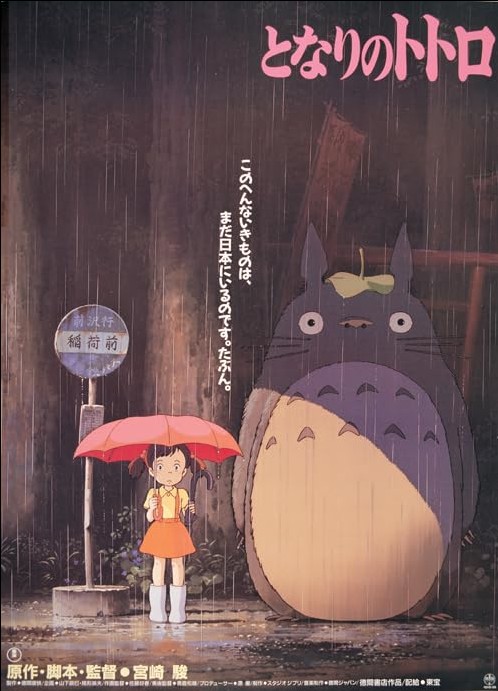
While the story and drawings of My Neighbor Totoro come from the infinite creativity of Hayao Miyazaki, the realization of the complete work is thanks to Studio Ghibli, currently one of the most influential entities in the global animation scene.

Studio Ghibli was officially founded in 1985 by Hayao Miyazaki, Isao Takahata, and producer Toshio Suzuki. The name Ghibli comes from the Libyan name for the Saharan wind, but also from the name of a specific model of aircraft used by the Italian Air Force in World War II, which Miyazaki was passionate about (Cavallaro, 2014, p.40). The studio was founded with the intention of releasing the film that would become Laputa: Castle in the Sky (1986), a film that achieved moderate success and effectively paved the way for the creation of My Neighbor Totoro in 1988. This success was not guaranteed, given Studio Ghibli's expressed intention from the outset to produce exclusively original stories and almost entirely for the big screen, thus foregoing potential revenue from having fans of reference source materials in theaters (Cavallaro, 2014, p.40), as was already happening and still happens frequently today with the production in Japan of animated works inspired by manga.
The film My Neighbor Totoro was therefore released in 1988 simultaneously with another Studio Ghibli film: Grave of the Fireflies, directed by Isao Takahata, which narrates, through the tragic story of two children, the horrors of World War II. Releasing two such important films simultaneously was very risky for the studio, so much so that the president, Yasuyoshi Tokuma, personally had to handle the distribution to make the release of both films possible (Cavallaro, 2014, p.41).
Here you can watch the official trailer for the film My Neighbor Totoro
Official Trailer https://www.youtube.com/watch?v=92a7Hj0ijLs
Neither film was actually a box office success, earning little more than the studio's first film, but they still received several awards from critics. What ultimately saved Studio Ghibli from the risk of possible failure was the merchandise related to the character of Totoro, which was successful shortly after the film's release and became even more so after the film was broadcast on Japanese television the following year as part of the promotion for the new film Kiki's Delivery Service (1989) (Yoshioka, 2018, p.6). “The stuffed toys were marketed nearly two years after the release of the film, and they were not intentionally created to promote box office performance. What actually happened was that a stuffed toy manufacturer ardently felt that Totoro was a character that deserved to be made into a stuffed toy and eagerly asked Ghibli for its permission. All in all, thanks to the sale of Totoro goods, it now became possible for Ghibli to continually cover for any deficit in production cost.” (Cavallaro, 2014, p.41)
The character of Totoro became so successful that it definitively became a symbol of Studio Ghibli, which incorporated it into its logo starting in 1991, inextricably linking itself to this character.
%20(1).png)
Image Credit Totoro Cover: Imdb - https://www.imdb.com/title/tt0096283/?ref_=ttmi_ov
Image Credit Ghibli Logo: Audiovisual identity Database - https://www.avid.wiki/Studio_Ghibli